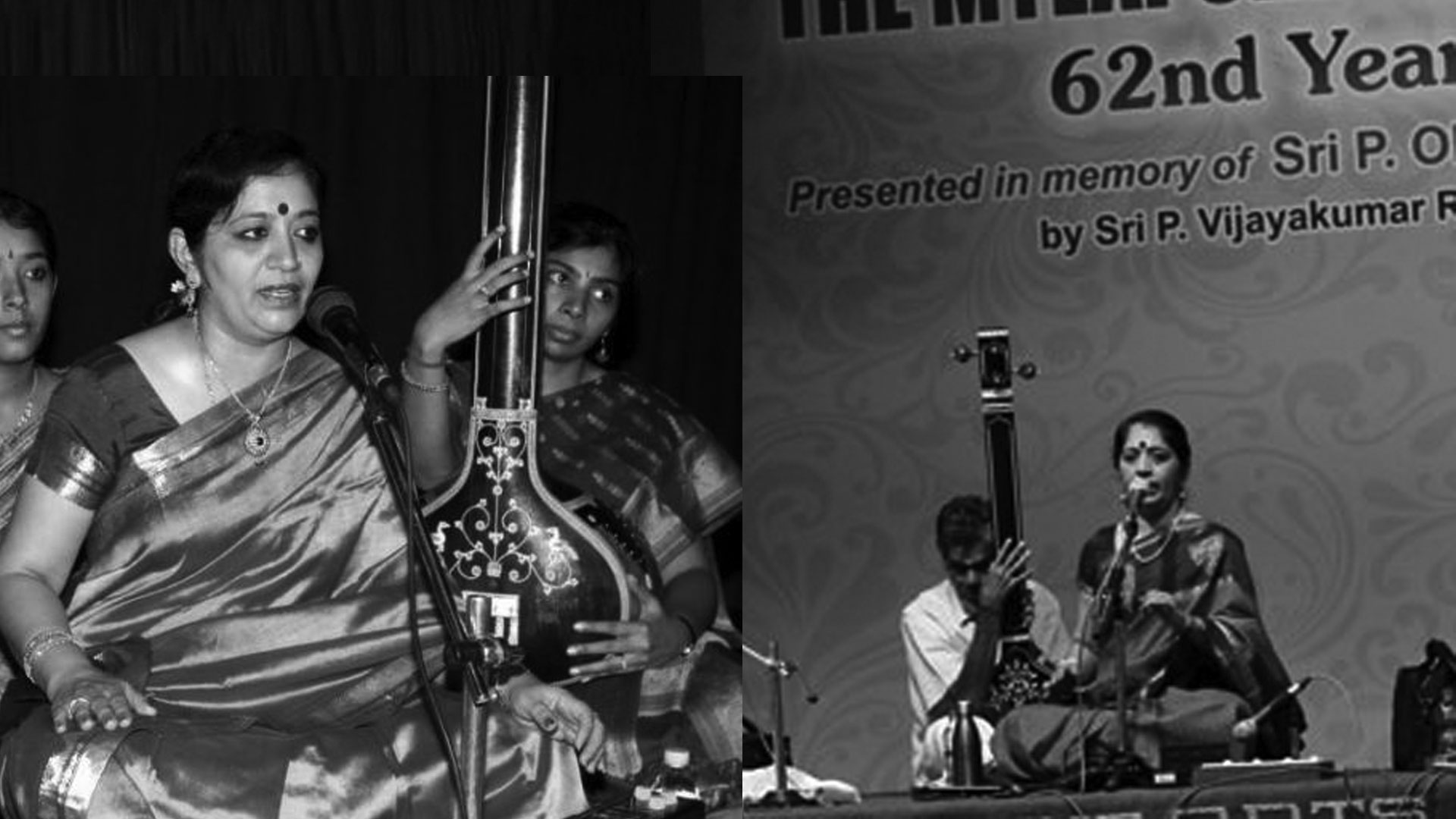Classical Carnatic music has always been more melody oriented than lyric. The basic structure of this system is one of creativity. Since creativity in any field has to take place within the defined parameters of that discipline, compositional forms have assumed some importance. It is the foundation on which the edifice of creativity is built.
From as early as the Parippaadal and then the Silappadikaram (2nd Century B.C.), we can draw inferences on the development of Tamil music. In the 7th, 8th and 9th Century A.D. the period of Thevarams, music was very religious in nature. Songs were usually sung in groups. Emphasis was more on the words than the tune. The tunes were set in different panns. Out of the seven parent scales of the panns, (Harikamboji, Natabhairavi, Hanumatodi, Dheerasankarabharanam, Kharaharapriya, Hanumatodi-with both madhyamams, and Mechakalyani) 103 panns were derived. Some additional raga names are found in Thirugnanasambandar's compositions.
We do not find any mettus to these compositions. Rich in musical content, the thevarams along with the Divya Prabandhams of the Alwars contributed largely to the spread and popularity of classical music. However, these compositions have come down more as devotional songs today than as art music, with limited sangatis. In fact, it is possible that group singing and these simple tunes perhaps inhibited raga development at this stage. Another significant factor was the use of the ‘Yazh’ for accompaniment. With its limited scope, the & ‘Yazh’ perhaps also inhibited the development of raga music.
About 500 years back, Saint Arunagirinathar (15th Century A.D.) composed the Thiruppugazh in the Chhanda's or "Kuzhippu" (referred to as the Chhanda talas). Here again, the meter and the flow of words take precedence over the music. From the time of Muthuthandavar (16th Century A.D.), one finds the now familiar kriti format of Pallavi, Anupallavi and Charanam.
The pattern is also found in the compositions of Oothukkadu VenkataSubbier (1700- 1765), who further enhanced his compositions with jathis and sollukattus. From then onwards there has been a distinct emphasis on art music, perhaps not deliberate. The kritiform has undergone consistent improvement and modification. We find that while the compositions are still religious in content, there is a change in the choice of ragas and in the structural build up of the ragas. The process has undergone tremendous refinement and we find composers like Koteeswara Iyer in the twentieth century who have composed deliberately, an intellectual work like the "Kanda Gaanaamudham" incorporating the seventy two melakartha ragas, with most compositions carrying the names of the ragas.
Since the period of the musical trinity of Tyagaraja,Muthuswamy Dikshitar and Syama Sastri, it is the kriti that has been the mainstay of carnatic music. Varnams, Padams, Javalis and Tillanas are other significant compositional forms. The basic sentiment of the compositions remains devotional. That is the interpretation even for padams and javalis that tend to be erotic in content.
While Tamil language is found extensively in devotional songs like Thevarams and the Divya Prabandhams, it is interesting to note that later day compositions have used Telugu and Sanskrit widely. Even the Tamil of the famed Tiruppugazh has many Sanskrit words. It is even more interesting to note that Telugu found such wide acceptance as the most suitable language for composing songs for carnatic music that even Tamilians were opting to compose in Telugu rather than in their own mother tongue Tamil! There were of course some brilliant Tamil composers like Oothukadu Venkata Subba Iyer, Gopalakrishna Bharati, Muthu Thandavar and Arunachala Kavi.
But the mainstay of kritis had come to be Telugu. Then followed the Tamil Isai movement that lead to a resurgence of interest and increased repertoire of Tamil compositions. It was an effort to create awareness of Tamil as a beautiful language, capable of rendering classical music in all its elegance. The effort was aimed at elevating Tamil to a status of a serious classical language as against only for singing tukkadas.
A significant development after the Tamil Isai movement was the inclusion of Tamil in the main repertoire of concerts. The main pieces were more often Tamil compositions with elaborate raga alapana, neravaland swaras. But, the varnams, javalis and tillanas continued to be largely in Telugu.
In the later part of the twentieth century, we do find a deviation from the earlier times. There are now varnams / pada varnams, heavy classical songs in rakti ragas and tillanas in Tamil.
This study aims at understanding the increased involvement in Tamil language as an aid to Carnatic classical music. There are composers who have specialized in different genres of compositions. There are varied themes- both raga and tala. There are extempore composers and deliberate composers who have composed with a particular concept in mind. There are composers who have composed exclusively in Tamil while some others have composed in other languages as well.
An attempt is made to understand the motivation to compose in Tamil. An analysis is also being made on the kind of language employed in the compositions. Where possible, the first hand views of some composers are being included to help towards a better understanding of the Vaggeyakara's mind.
The study will look only at the work of Vaggeyakaras of the twentieth century. There are other significant lyricists whose songs are popular in the concert repertoire but that is beyond the scope of this thesis.
